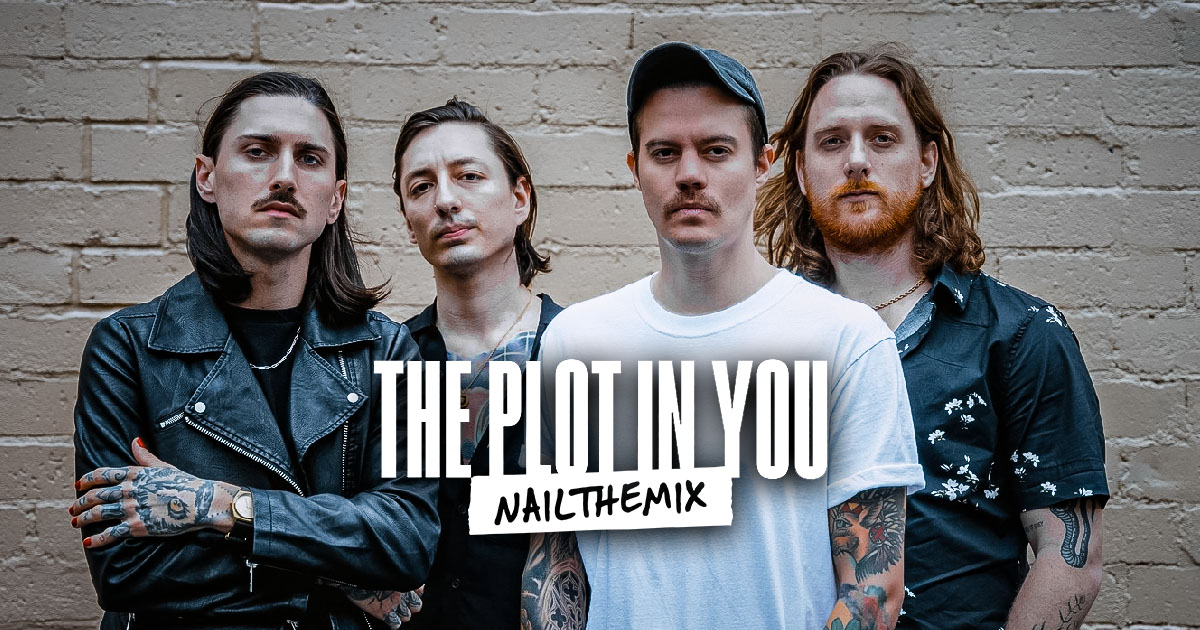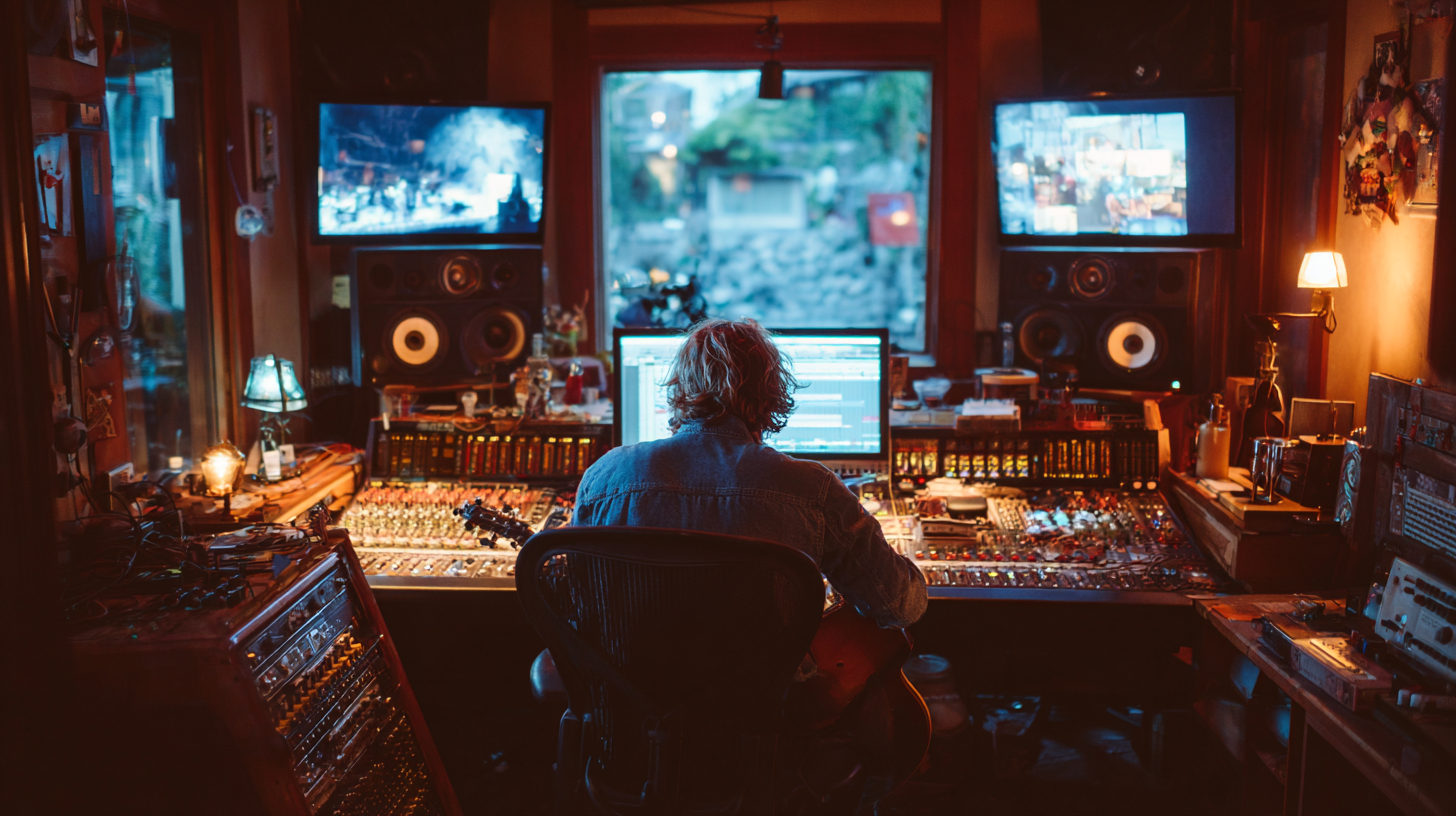
Behind the Brutality: Recording Signs Of The Swarm’s Heavy Tones
Nail The Mix Staff
Let’s be real, the sound of a band like Signs Of The Swarm is absolutely punishing. It’s dense, aggressive, and surgically precise. But how do you capture that level of intensity in the studio? Sometimes, it involves pushing gear to its limits, getting creative with the recording process, and even employing a few unorthodox tricks that might look insane but sound incredible.
Producer Josh Schroeder gave us a behind-the-scenes look at the sessions for Signs Of The Swarm, revealing the specific gear, settings, and hilarious-yet-effective techniques used to craft their monstrous sound. Forget the textbook approach; this is about doing whatever it takes to get the take.
The Unorthodox Secret to Disgusting Vocals
When you hear Dave Simonich’s vocals, you hear pure power and aggression. You probably picture him standing, feet planted, delivering those gutturals. The reality, however, was a little different.
The Setup: Comfort is King (Even if it Looks Weird)
For these sessions, Dave’s preferred vocal tracking position was lying on the floor with his legs propped up on a chair. Bizarre? Absolutely. But it worked. Whether it was compressing his diaphragm in a unique way or simply putting him in the right mental space, it’s a perfect example of a core production principle: the best technique is the one that gets the best performance from the artist. Comfort and vibe trump convention every time.
The Vocal Chain: Pushing Gear to its Limits
The signal path for those vocals was just as aggressive as the performance itself.
- The Mic: The go-to was a Shure SM7B, a workhorse for modern metal vocals. The settings were fairly standard for getting an aggressive, mix-ready sound: the low-cut filter was engaged to clean up mud, and the presence boost was on to help the vocals cut through the dense instrumentation.
- The Chain: From the mic, the signal hit a Neve preamp, which was intentionally pushed hard into the red for that classic analog saturation and character. From there, it went into a Distressor for some serious compression. Josh Schroeder wasn’t shy about it—the unit was getting “nuked” with a fast attack and fast release, driving the input until all the gain reduction lights were blazing. This approach smashes the dynamics for an ultra-consistent and in-your-face vocal sound.
Crafting a Filthy, Saturated Bass Tone
The bass on a Swarm record needs to be more than just a low-end foundation; it has to be a weapon. The tone for this album was all about saturation and precise control.
The Core Sound: A Modern Bass and Versatile Pedals
The instrument was a Dingwall NG2 with its active circuit engaged and knobs at noon, providing a killer modern starting point. The real tonal magic, however, came from the pedalboard.
The star of the show was a Darkglass Microtubes X Ultra. This pedal is a beast for shaping metal bass, offering powerful EQ and letting you dial in the perfect amount of saturated grind. While other pedals like a Rat and a Boss Heavy Metal were in the mix at some point, the Darkglass was key for getting that signature clank and aggression.
The Hardware Chain & The Golden Rule of Recall
The pedal signal was then run through a Universal Audio LA-610, but only using the tube preamp section; the unit’s optical compressor was bypassed. The compression was handled by another Distressor, adding even more punch and control.
The Most Important Tip: Take Pictures!
One of the most valuable, non-musical takeaways from the session is Josh’s insistence on documenting everything. When you’re using hardware pedals with no presets or stepped knobs, a stray foot can completely ruin a tone you’ve spent hours dialing in. The solution is simple: take a picture with your phone. He’d even name the file descriptively (e.g., “SOTS Bass Settings”) to ensure that if the band needed to come back weeks later to track more, they could recreate the exact sound in minutes.
A Drummer’s Guide to Tracking Complex Metal Parts
Bobby Crow, the drummer, had the monstrous task of not only writing incredibly complex drum parts in MIDI but then having to perform them perfectly on a real kit.
The “Guitar Hero” Method for Drum Tracking
To help with this, Josh implemented a brilliant solution. He set up a massive TV (later upgraded to a projector) in the tracking room, right in front of the drum kit. On the screen, he displayed the song’s MIDI drum grid. This allowed Bobby to essentially play along to his own composition, “Guitar Hero” style. It’s an incredible way to ensure the performance stays true to the intricate programmed parts while still allowing for the human feel and velocity adjustments that make a drum performance breathe.
Gear Choices for a Modern Metal Drum Sound
- Cymbals: The kit was decked out with Zildjian K series cymbals, including K Hi-Hats and K Crashes. These are a studio favorite for a reason. Their darker, complex character records beautifully and is less prone to the harsh, washy buildup that can plague brighter cymbals in a dense metal mix.
- Mics & Preamps: A classic Neve and API preamp setup was used, with a phase-inverted mic on the snare bottom to capture the crispness of the wires. To get an extra layer of grit, Josh even recorded snare samples in his garage, blending that “trashy” room sound with the main kit for added texture.
Dialing in Guitars: Doubling Down on a Classic
The guitar tone for Signs Of The Swarm is a high-gain onslaught, but the secret to its tightness and aggression comes from a classic trick, taken to the extreme.
An Insanely Aggressive Boost
After dealing with the classic “knob fiddler” problem by taping down the guitar’s volume pot, the real shaping began. The core of the guitar rig’s bite came from stacking not one, but two Ibanez Tube Screamer-style pedals back-to-back.
This isn’t about adding more distortion. Using a Tube Screamer as a boost in front of a high-gain amp is a time-honored metal technique. It rolls off muddy low-end and pushes the midrange, resulting in a tighter, more articulate, and aggressive tone. Stacking two of them supercharges this effect, creating an incredibly focused and cutting sound that’s perfect for fast, technical deathcore riffing. It’s a masterclass in using EQ strategies before the amp to get the perfect result.

100+ Insanely Detailed Mixing Tutorials
We leave absolutely nothing out, showing you every single step
See How It All Comes Together
These behind-the-scenes techniques are the kind of thing that separates a good mix from a genre-defining one. It’s about more than just presets; it’s about creative problem-solving and pushing your tools in interesting ways. If you want to see exactly how producers like Josh Schroeder take these raw, creatively-tracked sounds and mix them into a final, polished master, you need to be on Nail The Mix.
Signs of the Swarm on Nail The Mix
Josh Schroeder mixes "Amongst The Low and Empty"
Get the Session
Every month, you get to be a fly on the wall as a world-class producer mixes a real song from a massive band from scratch, explaining every plugin, fader move, and creative decision along the way. You even get the multitracks to practice on yourself. Want to go even deeper on mixing modern metal? Check out our guide to mixing beyond presets.
To see how these Signs Of The Swarm tracks were mixed and to get your hands on the raw audio, check out Josh Schroeder’s full Nail The Mix session. It’s time to stop guessing and start learning from the pros who are defining the sound of modern metal. Get access now.
Get a new set of multi-tracks every month from a world-class artist, a livestream with the producer who mixed it, 100+ tutorials, our exclusive plugins and more
Get Started for $1




